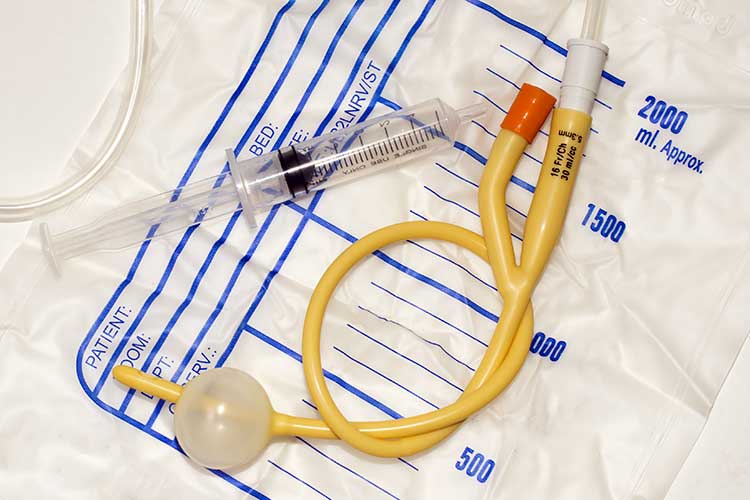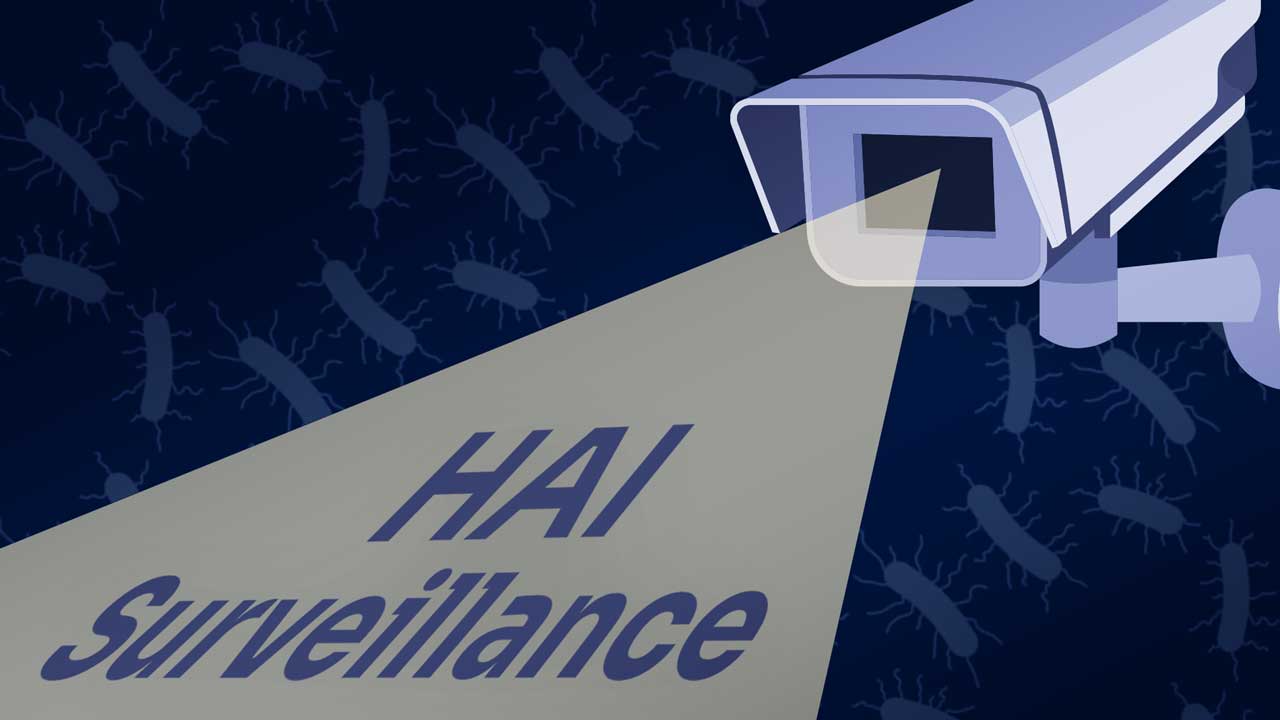Healthcare-associated infections (HAIs) are the most common complication for hospitalised patients in Australia, with approximately 165,000 cases annually (NHMRC 2022).
These infections, which can occur in any healthcare setting, cause unnecessary pain and suffering for the patient, prolong hospital stays and add to the cost of care (ACSQHC 2023a).
However, through HAI surveillance, approximately one-third of cases can be prevented (VICNISS 2022).
What is a Healthcare-Associated Infection (HAI)?
The term healthcare-associated infection (HAI) refers to any infection acquired as a result of healthcare, either directly or indirectly (ACSQHC 2023a).
HAIs may be caused by a variety of pathogens, some of which are multi-resistant organisms (MROs) that are especially difficult to identify and treat (NSW Health 2020).
Common HAIs in Australia include:
- Pneumonia
- Urinary tract infection (UTI)
- Surgical site infection
- Bloodstream infection
- Clostridioides difficile infection.
(Lydeamore et al. 2022)

What is Healthcare-Associated Infection Surveillance?
HAI Surveillance is the practice of monitoring and reporting HAI incidents. Surveillance allows health service organisations to evaluate current practice, observe outcomes, deliver feedback to staff and implement HAI prevention strategies as required. The aim is to improve clinical practice and consequently, patient outcomes (VICNISS 2022; ACSQHC 2023b).
Using infection rate data, organisations can assess the effectiveness of any strategies they have implemented. Once data has been collected, it can be delivered to the appropriate personnel and used to inform the development of future policies, procedures and protocols (VICNISS 2022; ACSQHC 2023b).
Surveillance can help organisations determine:
- Whether there is an infection issue
- The extent of the issue
- The factors that are contributing to the issue.
(VICNISS 2022)
The importance of HAI surveillance can be summarised by these three key points:
- Patients have the right to expect the same quality of care from any organisation, regardless of its size or location. Therefore, if there are certain organisations with a greater prevalence of HAIs, this issue must be identified and addressed.
- Health service organisations have an obligation to make informed and appropriate decisions. Using data, organisations can determine where they need to direct their resources.
- Surveillance can help organisations identify successful infection-prevention interventions.
(Russo et. al 2018)
HAI Surveillance in the National Safety and Quality Health Service Standards
HAI surveillance is outlined in Action 3.05 of the National Safety and Quality Health Service Standards, under Standard 3: Preventing and Controlling Infections.
This action requires health service organisations to establish a HAI surveillance strategy that:
- Ensures the timely use of national and jurisdictional information
- Gathers data on HAIs in line with the organisation's size and scope
- Utilises this surveillance data to evaluate and mitigate infection-related risks
- Shares infection surveillance data with the workforce, governing body, consumers, and any other relevant groups
- Gathers data on the appropriateness of antimicrobial use within the organisation
- Uses this surveillance data to support appropriate antimicrobial prescribing
- Monitors responsiveness to identified risks through surveillance
- Shares antimicrobial use surveillance data with the workforce, governing body, consumers, and any other relevant groups.
(ACSQHC 2022)
What Does Surveillance Monitor?

Examples of surveillance initiatives in Australia include:
- Staphylococcus aureus bloodstream infection
- Clostridium difficile infection
- Central line-associated bloodstream infection
- Catheter-associated urinary tract infection
- Surgical site infection
- Ventilator-associated complications
- Infections in intensive care units
- Infections related to invasive devices (outside of ICU)
- Significant multi-resistant organisms (such as methicillin-resistant Staphylococcus aureus, vancomycin resistant-enterococci and carbapenamase-resistant enterococci)
- Hand hygiene
- Workforce immunisation
- Outbreak mamagement
- Occupational exposures to blood and body fluids
- Antimicrobial stewardship.
(ACSQHC 2023b; VICNISS 2022)
Establishing an Effective Surveillance Plan
In order for surveillance to work effectively, organisations should:
- Follow all relevant statutory requirements, safety standards and guidelines
- Use laboratory-based surveillance and clinical ward rounds to identify infections
- Monitor antibiotic-resistant bacteria and other pathogens of significance
- Use surveillance across the entire organisation
- Provide feedback from surveillance data analysis to health services.
(Health.vic 2021)
Conclusion
Healthcare-associated infections are common and often have adverse consequences for patients.
However, surveillance allows health service organisations to gather data that can then be used to establish and monitor interventions to reduce the prevalence of HAIs.
Test Your Knowledge
Question 1 of 3
Approximately how many cases of healthcare-associated infection are there in Australia every year?
Topics
References
- Australian Commission on Safety and Quality in Health Care 2022, Action 3.05 Surveillance, Australian Government, viewed 24 July 2023, https://www.safetyandquality.gov.au/standards/nsqhs-standards/preventing-and-controlling-infections-standard/clinical-governance-and-quality-improvement-systems-are-place-prevent-and-control-infections-and-support-antimicrobial-stewardship-and-sustainable-use/action-305
- Australian Commission on Safety and Quality in Health Care 2023b, HAI Surveillance, Australian Government, viewed 24 July 2023, https://www.safetyandquality.gov.au/our-work/infection-prevention-and-control/hai-surveillance
- Australian Commission on Safety and Quality in Health Care 2023a, Healthcare-Associated Infection Program, Australian Government, viewed 24 July 2023, https://www.safetyandquality.gov.au/our-work/healthcare-associated-infection
- Health.vic 2021, Healthcare-associated Infection Prevention, Victoria State Government, viewed 24 July 2023, https://www2.health.vic.gov.au/hospitals-and-health-services/quality-safety-service/infection-prevention/healthcare-associated-infection
- Lydeamore, MJ, Mitchell, BG, Bucknall, T, Cheng, AC, Russo, PL & Stewardson, AJ 2022, ‘Burden of Five Healthcare Associated Infections in Australia’, Antimicrobial Resistance & Infection Control, vol. 11, no. 69, viewed 24 July 2023, https://aricjournal.biomedcentral.com/articles/10.1186/s13756-022-01109-8
- National Health and Medical Research Council 2022, Australian Guidelines for the Prevention and Control of Infection in Healthcare (2019), Australian Government, viewed 24 July 2023, https://www.safetyandquality.gov.au/publications-and-resources/resource-library/australian-guidelines-prevention-and-control-infection-healthcare
- NSW Health 2020, Healthcare Associated Infection, New South Wales Government, viewed 24 July 2023, https://www.health.nsw.gov.au/professionals/hai/Pages/default.aspx
- Russo, PL, Cheng, A, Mitchell, BG & Hall, L 2018, ‘Healthcare-Associated Infections in Australia: Tackling the 'Known Unknowns', Australian Health Review, vol. 42 no. 2, viewed 24 July 2023, https://research.avondale.edu.au/cgi/viewcontent.cgi?article=1145&context=nh_papers
- VICNISS 2022, What is Surveillance?, VICNISS, viewed 24 July 2023, https://www.vicniss.org.au/about/what-is-surveillance/

